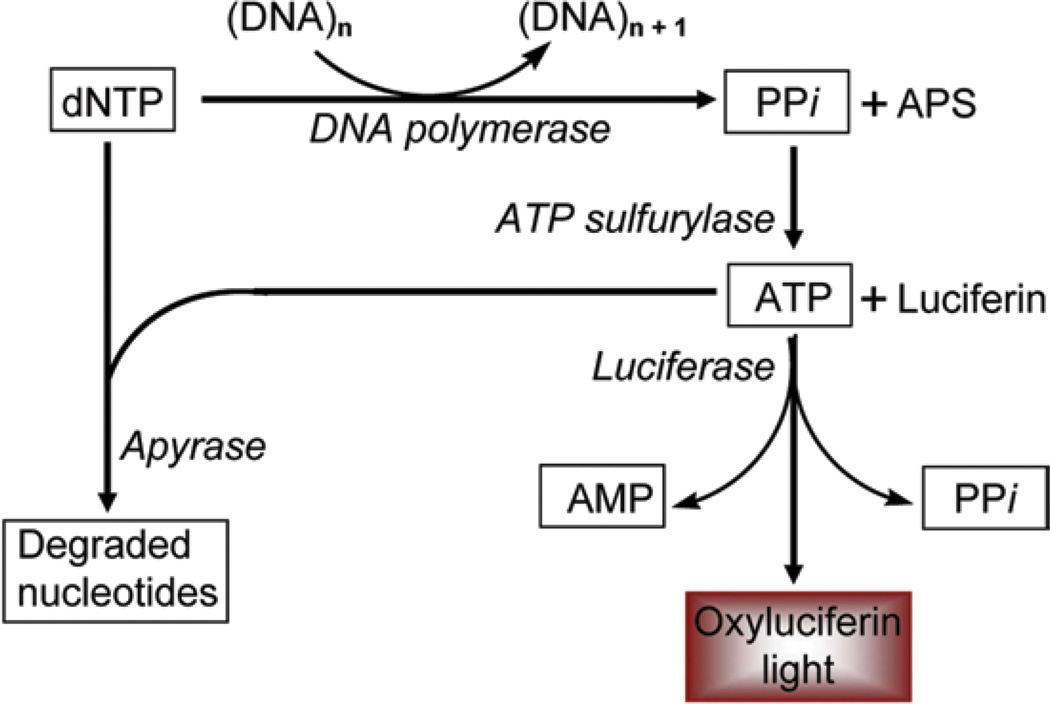Fig. 3.
Enzyme cascade system in pyrosequencing. An ssDNA template is first hybridized with the sequencing primer and mixed with enzymes (written in italics) and two substrates (APS and luciferin). After successful incorporation of a nucleotide by DNA polymerase into a growing DNA strands, the released PPi reacts with APS in the presence of ATP sulfurylase giving rise to ATP. ATP in the presence of substrate luciferin and enzyme luciferase produces oxyluciferin that generates visible light, which can be detected by inbuilt CCD camera. Any unincorporated nucleotides and ATP are degraded into its building blocks by enzyme apyrase prior to the next nucleotide dispensation. Cascade reactions repeat for every dispensation. ATP adenosine triphosphate, APS Adenosine 5′ phosphosulfate, PPi pyrophosphate

